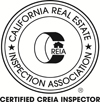




Omni Home Inspections' goal of the Pre-Purchase Home Inspection and Pre-Sale or Pre-Listing Home Inspection is to provide our clients with a clear understanding of the property and its components, by revealing the general condition of the property as it is visually inspected at the time of the inspection.
On average, the prospective home buyer spends less than one hour in the home prior to making an offer. This makes it very difficult for the buyer to have a comprehensive understanding of the home's condition. By having a Pre-Purchase Property Inspection you can greatly reduce these risks of buying a home.
If you are planning on selling your home, a Pre-Sale or Pre-Listing Home Inspection is an advantageous step to take in preparing to list your home. You may not be fully aware of the current condition of your home and know what repairs or modifications that might be necessary in order to close the deal. A Pre-Sale Home Inspection will reveal important information about your home which can prove to be very beneficial when it comes time to negotiate the sale. You will have time to get bids and repair prices and not be pressured to accept unreasonable ball park repair costs at closing.
If you have lived in your home over five years a Home Maintenance Inspection is a great idea. Roof leaks, plumbing leaks and crawlspace issues often go undetected by the home owner. These issues when addressed early are typically inexpensive to repair. If neglected they can cost you thousands of dollars! A Home Maintenance Inspection will reveal ongoing issues and address potential problem areas that can be dealt with in a pro-active manner.
Systems and Components included in a Home Inspection:
1. Foundation, Basement, and Under-floor Areas
A. Items to be inspected:
- Foundation system
- Floor framing system
- Under-floor ventilation
- Foundation anchoring and cripple wall bracing
- Wood separation from soil
- Insulation
2. Exterior
A. Items to be inspected:
- Surface grade directly adjacent to the buildings
- Doors and windows
- Attached decks, porches, patios, balconies, stairways, and their enclosures
- Wall cladding and trim
- Portions of walkways and driveways that are adjacent to the buildings
3. Roof Covering
A. Items to be inspected:
- Covering
- Drainage
- Flashings
- Penetrations
- Skylights
4. Attic Areas and Roof Framing
A. Items to be inspected:
- Framing
- Ventilation
- Insulation
5. Plumbing
A. Items to be inspected:
- Water supply piping
- Drain, waste, and vent piping
- Faucets and fixtures
- Fuel gas piping
- Water heaters
- Functional flow and functional drainage
A. Items to be inspected:
- Service equipment
- Electrical panels
- Circuit wiring
- Switches, receptacles, outlets, and lighting fixtures
7. Heating and Cooling
A. Items to be inspected:
- Heating equipment
- Central cooling equipment
- Energy source and connections
- Combustion air and exhaust vent systems
- Condensate drainage
- Conditioned air distribution systems
8. Fireplaces and Chimneys
A. Items to be inspected:
- Chimney exterior
- Spark arrestor
- Firebox
- Damper
- Hearth extension
9. Building Interior
A. Items to be inspected:
- Walls, ceilings, and floors
- Doors and windows
- Stairways, handrails, and guardrails
- Permanently installed cabinets
- Permanently installed cook-tops, mechanical range vents, ovens, dishwashers, and food waste disposers
- Absence of smoke alarms
- Vehicle doors and openers


